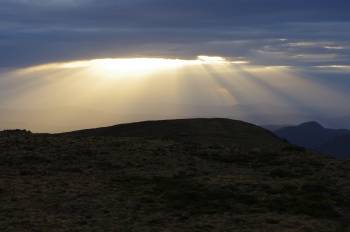As part of it’s state budget process for 2023/24, the Victorian government has announced that it will bring forward the shut down date for native forest logging across the state from 2030 to January 1, 2024. This is a huge development, and follows an intensification of environmental campaigning, a series of court cases that stopped logging in significant parts of the state, and a new environment minister following the re-election of the Andrews government in November 2022.
This means the state will be spared another six years of intensive logging and allow us to start the generations long work of restoring a landscape that has been deeply impacted by intensive logging and repeat fires in recent decades.
The full details on ‘what next’ – that is, how the shut down will be managed and what logging will occur before January 1 – are yet to be released. This is expected in coming weeks. There will also be an ‘expanded transition support package’ of $200 million ‘in support for workers and their families to transition away from native timber logging earlier than planned’.
The shutdown was brought forward out of necessity: ‘native forestry has been hit with increasingly severe bushfires, prolonged legal action and court decisions. There are no alternative timber supply sources available domestically or internationally which can offset the current disruptions to supply to Victorian mills and there are no options for regulatory reform which can prevent further legal injunctions continuing to disrupt native timber harvesting operations’.
What this means for the high country
What this means for the high country is that it can now be returned to a whole landscape, rather than one that has most of the ‘economic’ forests cut and burnt in logging operations. This will be the work of generations. But what happens in the next few months will be incredibly important – we need to ensure there is no last minute ‘cut and run’ logging before the January 1 deadline.
We live in a time of accelerating climate change, which is already leading to ecological collapse in both snow gum and alpine ash forests. The plan developed now, to restore these forests, will require traditional knowledge and the latest of science. It will need to find ways to intervene to protect forests as they recover from logging and fires. There are many opportunities for native forest workers to be employed in this work.
In the short term we will need to increase our vigilance. Logging under the guise of ‘fallen product recovery’ is currently occurring near Mt Pinnibar and recently happened in the upper Jamieson valley near Mt Lovick. Key areas that are eligible for logging under the timber release plan could be targeted in coming months.
Friends of the Earth (FoE), working with a range of local allies, has identified three key areas which are scheduled for logging which are exceptionally important and must be protected.
These are:
Mt Wills area
Mt Wills is an ‘island in the sky’ – a small plateau which supports old growth snow gum woodlands, surrounded by lower valleys. It is connected to Victoria’s highest mountain – Bogong (Warkwoolowler) by Long Spur. There are impressive, older alpine ash forests on Long Spur, below the Mt Wills summit, which are scheduled for logging. Dense, flammable regrowth from logging operations would pose a direct risk of intense fire to the uphill old forests of Mt Wills.
Mt Stirling
Mt Stirling is a famous and popular spot for cross country skiing, walking, mountain bike riding, trail running and four wheel driving. It has up to 11 areas of forest scheduled to be logged. Logging will have dramatic impacts on recreation, as well as fragmenting the high elevation forests that circle the summit area.
The Little Dargo
The Little Dargo is a special, un roaded headwater area that contains old forests of mountain gum and recovering alpine ash. Unlike much of the surrounding area, it has only been lightly burnt in recent decades. Logging is likely to yield mostly low value products like pulp. How can the destruction of a pristine catchment be allowed for pulp and pallets?
As the details are revealed about the shut down plan, groups like FoE will be keeping a close eye on logging / harvesting operations in the north east.
If you see something, please let us know: cam.walker@foe.org.au
























































Leave a comment